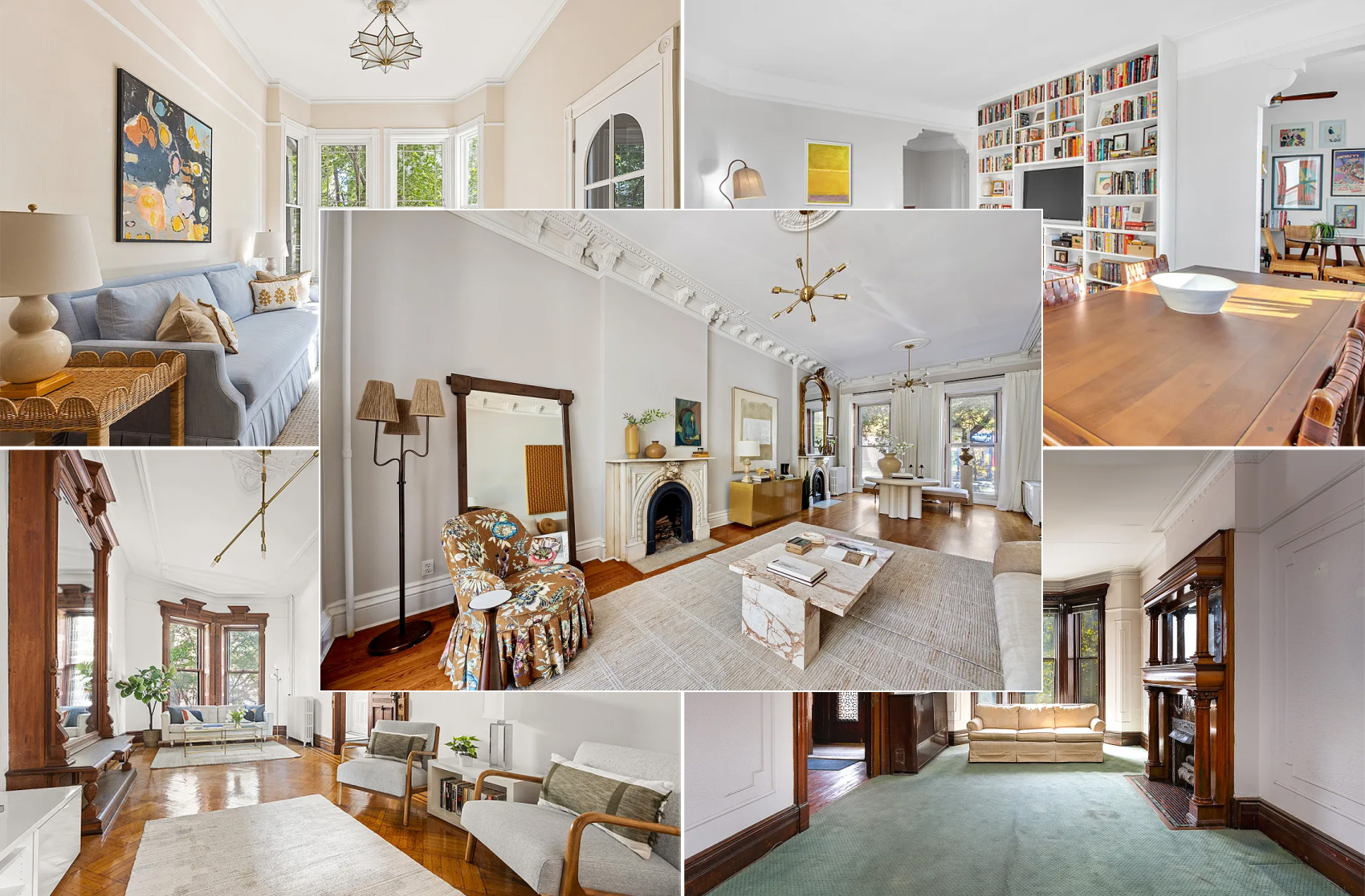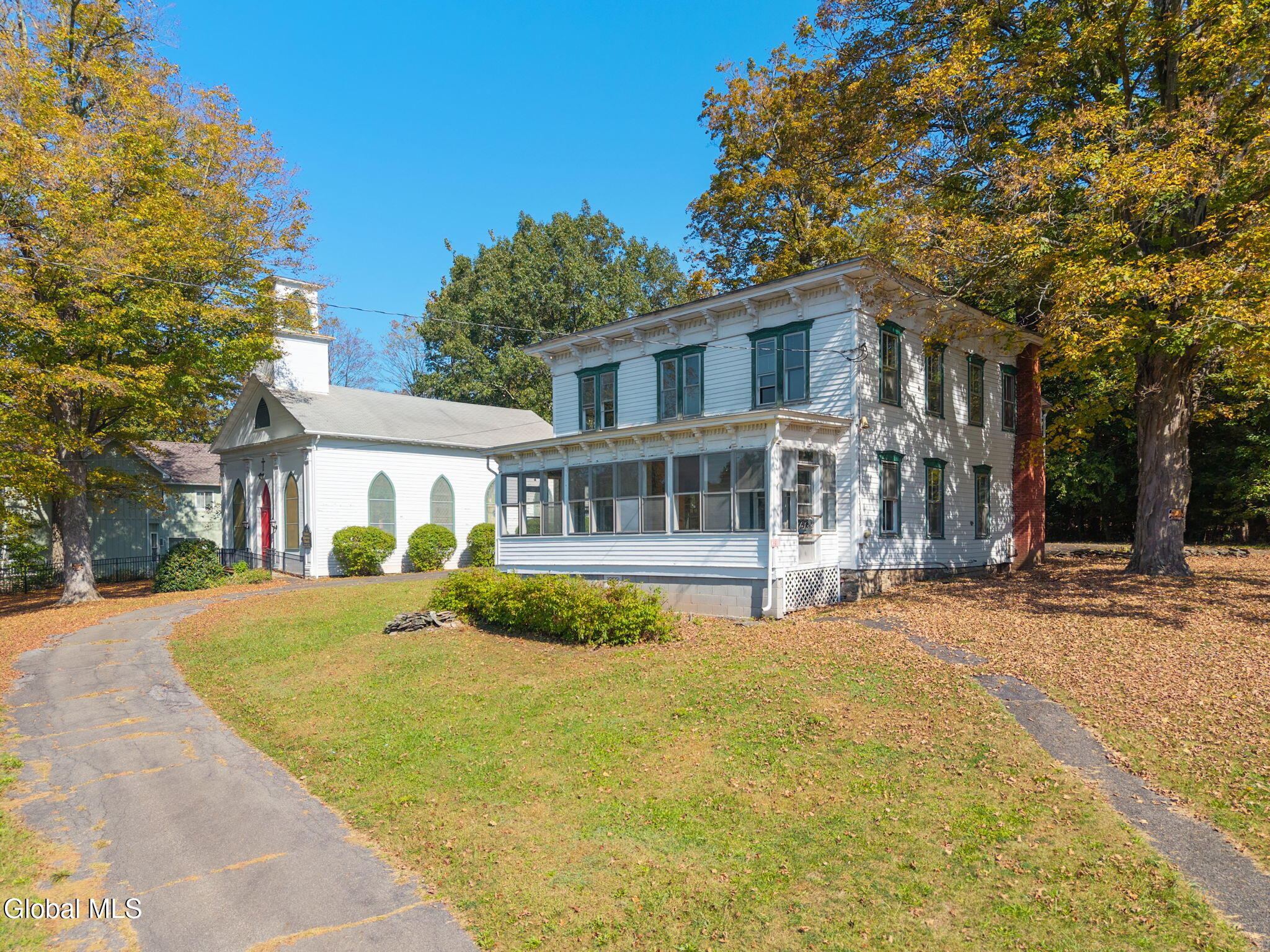Brownstone Interior Destroyed Modernized by Artist Couple
We had mixed emotions reading the Times Real Estate story this weekend about the older artist couple who financed the purchase of a Stuyvesant Heights brownstone four years ago by selling a Basquiat that one of them had picked up for $100 back in the Eighties. (Anyone know what block this is?) Aren’t there enough…

 We had mixed emotions reading the Times Real Estate story this weekend about the older artist couple who financed the purchase of a Stuyvesant Heights brownstone four years ago by selling a Basquiat that one of them had picked up for $100 back in the Eighties. (Anyone know what block this is?) Aren’t there enough brownstones that have already been stripped of their original detail that someone wanting to create a modern space could avoid destroying yet another piece of history? Yes, these folks were considerate enough to call in a salvage company to save the architectural artifacts, but it’s still a bummer. And how about all that tree-cutting? What a soap opera! Update: Okay, it’s sounding like the Times article might have overstated how salvageable the interiors of this place were, so it’s looking like we came down a little too hard on these folks. Apologies.
We had mixed emotions reading the Times Real Estate story this weekend about the older artist couple who financed the purchase of a Stuyvesant Heights brownstone four years ago by selling a Basquiat that one of them had picked up for $100 back in the Eighties. (Anyone know what block this is?) Aren’t there enough brownstones that have already been stripped of their original detail that someone wanting to create a modern space could avoid destroying yet another piece of history? Yes, these folks were considerate enough to call in a salvage company to save the architectural artifacts, but it’s still a bummer. And how about all that tree-cutting? What a soap opera! Update: Okay, it’s sounding like the Times article might have overstated how salvageable the interiors of this place were, so it’s looking like we came down a little too hard on these folks. Apologies.
Bankrolled by a Basquiat [NY Times]
Photo by Gabriele Stabile for The New York Times





Thank you bedstuyhoya. Case closed.
I have actually seen the interior photos of this house before the renovation. I don’t recall seeing anything in those photos worth saving (maybe an odd fireplace, but that’s all). Considering the dearth of salvageable details, I think this couple did a mighty fine job. It may not be to everyone’s taste, but at the very least we can all respect the work and effort required to make this fine home.
Welcome Morris and Mary-Anne! You two are a great addition to the neighborhood!
Maybe the phrase “don’t give a rat’s ass” was a bit extreme Bob.
It goes without saying that you can do whatever you want with the interior of your private property, so long as you’re not breaking any laws. I think that’s a good thing, new2 and dibs. I certainly wouldn’t want the Brownstoner crowd to be able to come into my home and tell me what I should/shouldn’t do with it! And I even admire the renovation that this couple has done. As a lover of architecture and design in general, this looks like a rather gorgeous example of a thoroughly contemporary renovation of a historic structure!
But, my first love at heart is for old houses — especially those turn-of-the century urban townhouses known as brownstones and limestones (as I would assume to be the case of most folk who originally gravitated to this site). Thus, I also agree with the thrust of Brownstoner’s question: if you truly lust for a modern interior brownstone (as many do), then why not pick a structure that has little architectural/historic detail to offer? As I read the story, this house actually had a substantial amount of original detail that was removed (much to the consternation of their neighbors and preservationists) solely for the purpose of making way for a modern design. IMHO, that’s like forcing a square peg into a round hole. Although it can be done. . . why?
It’s too bad we don’t have “before” pictures to resolve the question.
“Most people in that neighborhood really don’t give a rats ass what people are doing inside their homes unless it gets too loud, messy or just plain irritating.”
I don’t think people in my neighborhood feel that way. When I was president of the Lefferts Manor Association in the early ’90s one of my neighbors sold all his parlor floor woodwork to an antique dealer. MANY neighbors rang my bell, asking what we could do to stop him. Of course there was nothing, but it was painful to tell them that.Ironically I later came across the stripped-out detail in a Queens antique shop. The dealer said that even he had tried to dissuade the homeowner from selling. He was sure that the value of the house had been reduced by far more than what the homeowner gained from the sale.
And yes, that is sad that they don’t.
Like I said, if someone can prove that the place was “chock full” of details then that’s one thing but I suspect that the writer embellished the story, as usual.
My experience is that 80-90% of the homes in Bed Stuy do not actually have enough detail left to make it worth salvaging.
My head tells me that it’s their house and they can do whatever they want with the inside. My heart tells me that it’s a shame and that I’d never do anything like that, or even knowingly sell my house to someone who I suspected would destroy the details. (Of course, I never actually plan to sell my house, but that’s a different story).